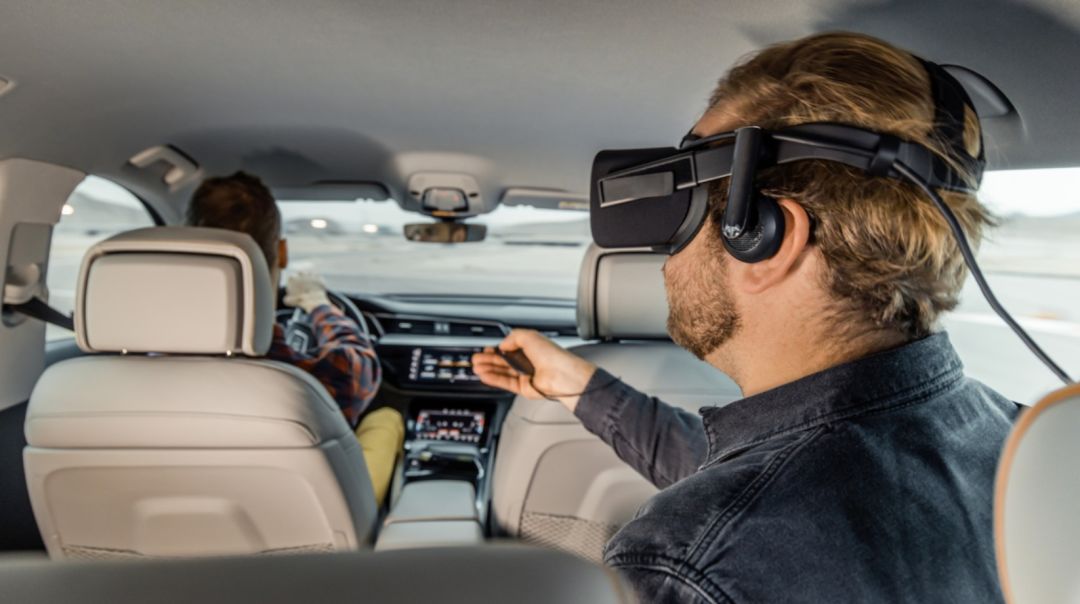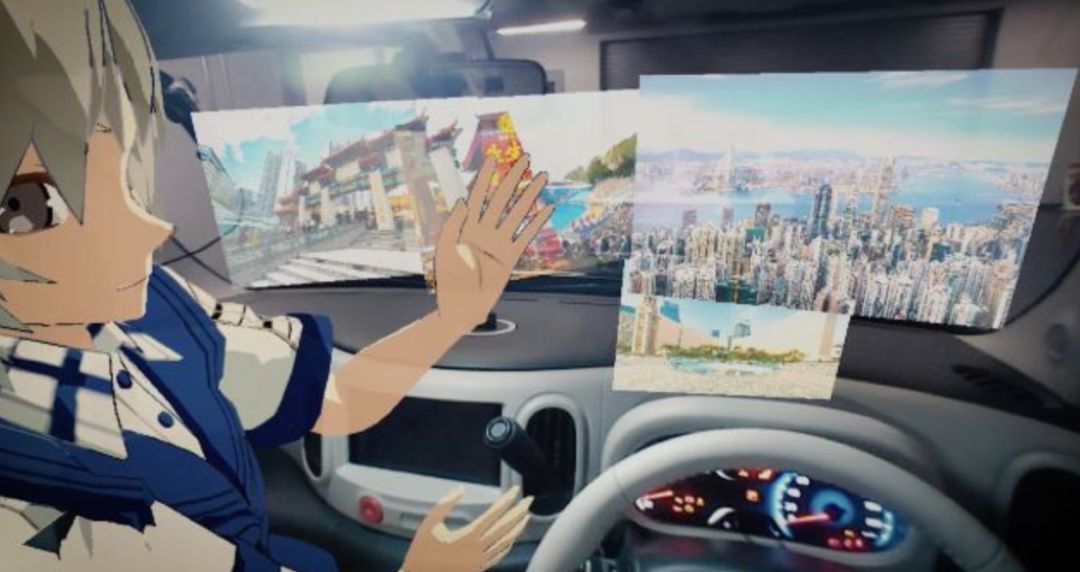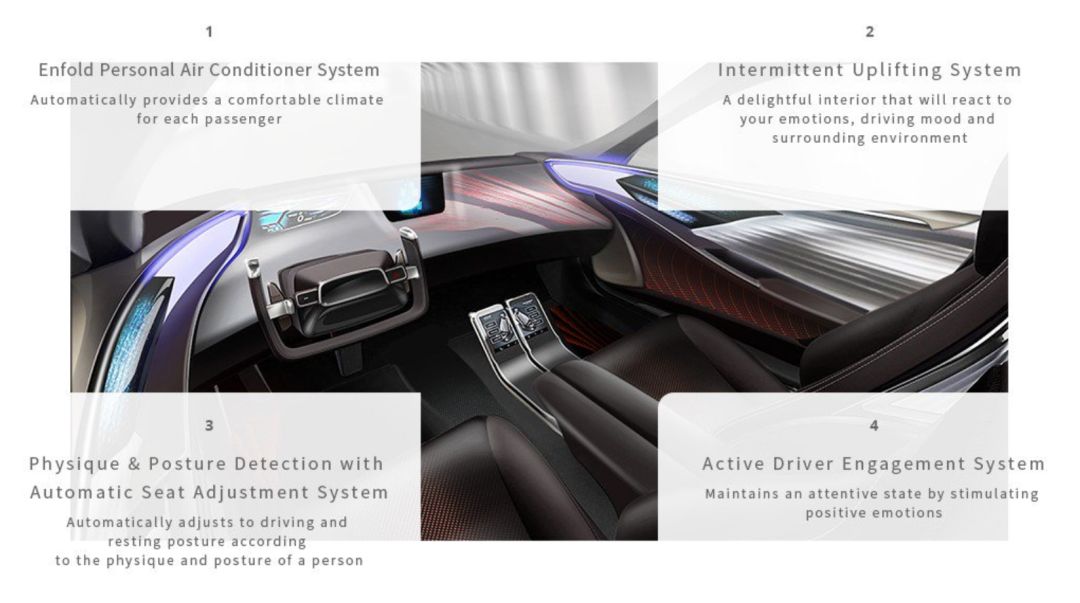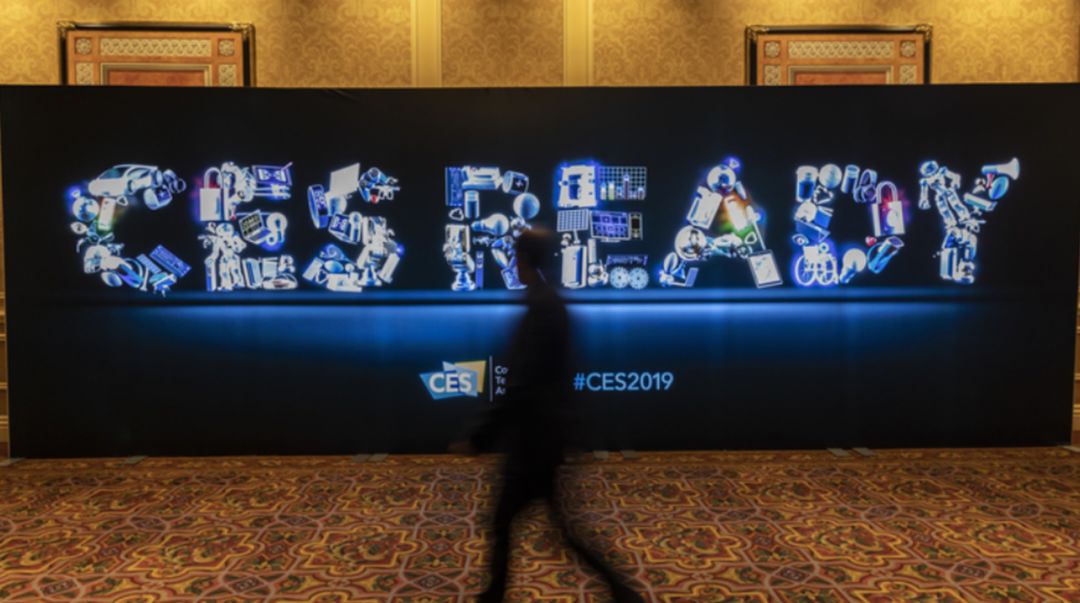Just a few days after the New Year, while the high rollers who gambled in Las Vegas were not yet fully recoverd, a big event quietly took place in this city, drawing in 180,000 people and over 4,400 companies. However, not all of them came to take care of the gambling business; what attracted them was the annual CES.
CES stands for the International Consumer Electronics Show. At a consumer electronics exhibition, you can see Mercedes-Benz, BMW, Audi, Toyota, Nissan, Hyundai… Amazing! Hasn’t it turned into a car show? Don’t get too excited, CES has long outshone the Detroit Auto Show. In the era of great changes in the automobile industry, who can’t keep up with intelligence? Walking around Las Vegas every year is like saying, “Hey, am I smart enough?”
For such a “non-mainstream” exhibition, Mercedes-Benz’s attitude is still very proper. The company not only brought the brand-new second-generation CLA model, but also showcased the first electric car of the EQ series, EQC, and the Vision URBANETIC, which debuted at the Hanover Commercial Vehicle Show in 2018. The new CLA is developed based on the MFA2 platform, and may be equipped with 1.3T and 2.0T four-cylinder engines and a 7-speed dual-clutch transmission.
In addition, it will be equipped with a brand-new MBUX (Mercedes-Benz User Experience) infotainment system. The driver can perform multiple combination operations using the steering wheel buttons. It is worth mentioning that this system debuted at CES a year ago, and now it is ready for production. Mercedes-Benz’s speed is worth praising.
Not only CLA will be equipped with MBUX, but also the pure electric SUV showcased at the same exhibition, EQC. Although EQC was unveiled last October, as a milestone electric car under Mercedes-Benz’s umbrella, it is still very popular. According to official sources, EQC’s NEDC range can reach more than 450 km, and the domestically-produced EQC produced by Beijing Benz will also be available by the end of this year. Let’s take a look at how traditional luxury car brands go head to head with Tesla and new forces by watching EQC’s performance.
Toyota’s highlight at this year’s CES is autonomous driving. The company released its latest autonomous driving prototype, TRI-P4. Interestingly, this vehicle will concurrently undertake the testing tasks of two auto-driving modes, “Guardian” and “Chauffeur,” which have significant differences in orientation.”The main function of ‘Guardian’ is to assist drivers and help them enhance their driving skills, while the aim of ‘Chauffeur’ is the ultimate fully automatic driving mode that completely replaces drivers. Ryan Eustice, Senior Vice President of Autonomous Driving at Toyota Research Institute, described Guardian as ‘a super-advanced driver’s assistant’, and CEO of Toyota Research Institute, Gill Pratt, expressed hope that Toyota’s technology will be provided to other automakers.
‘Walking on two legs’ may require more energy and resources, but for the large-scale Toyota, it is a safe way.
In addition to Toyota, Baidu brought Apollo to CES again. There are three highlights: first, Apollo Enterprise, which is Baidu’s car networking and autonomous driving package sales; second, Apollo 3.5 supports complex road and city scenes; third, Baidu and WM Motor signed a contact and will be long-term partners in L3 and L4 level autonomous driving. The road of automatic driving taken by this Chinese internet company is becoming clearer, and more and more companies are accepting it and willing to cooperate.
Meituan tells us that autonomous driving can also be used to deliver take-out. Speaking of Meituan, it’s a little hungry. Meituan showcased its entire lineup of unmanned delivery vehicles at this year’s CES, and during the exhibition period, Faurecia and Meituan also reached a strategic partnership on last-mile unmanned delivery technology. Faurecia will provide key components such as motors, sensors, lighting, and thermal management, as well as related technologies for Meituan’s unmanned delivery vehicles. Perhaps soon, the delivery of take-out will be made by unmanned delivery vehicles, not deliverymen.
While car manufacturers are using modularity to reduce costs, this Swiss design company is considering separating and replaceable chassis and vehicles. Rinspeed brought a concept car called microSNAP, which is a chassis-cabin-separated electric vehicle, where the powertrain and autonomous driving system are integrated on the chassis. Different types of cabins can be installed above the chassis, which can seat people or transport goods, and the cabins can be changed at any time.
Last year, this company showcased their SNAP model at CES, and this year’s microSNAP is obviously a scaled-down version. I don’t think this design is particularly new. Look at the trailers on the road; aren’t they all interchangeable ‘cargo boxes’?”
Hyundai definitely had the most creative concept car at CES. Its latest creation, “Elevate”, looks like the “Jade Rabbit” from Chinese mythology upon first glance…but it’s way cooler. This car does more than just drive on wheels. Its legs allow it to crawl, walk, and even climb a 1.5-meter wall – it’s basically invincible. Hyundai says this car is mainly designed for search and rescue, humanitarian aid, and other similar tasks in the future. The Elevate is based on a modular electric vehicle platform and can transform into different styles and directions, thanks to its “legs” that are equipped with hub motors.

Apart from Hyundai, Bell Helicopter, a partner of Uber, showcased its vertical takeoff and landing (VTOL) taxi at CES. Called Nexus, this hybrid-electric-powered flying cab can carry 4-5 people and hover up in the sky, thanks to its tilting rotors. Bell Helicopter introduced the cabin design of their flying taxi at CES last year, and now it has become a complete flying cab. So, if you feel sick of being stuck in traffic jams on the ground, why not just fly to your destination with a taxi in the air?

Although most companies at CES were presenting their latest technology products, there were some jokester companies that didn’t take the tradeshow seriously.
Take Audi, for example. Its new technology was just for fun, and was called the “Immersive In-Car Entertainment System.” Audi engineers worked hard to create this experience for passengers so that they wouldn’t fall asleep as soon they got in the car. Passengers wearing VR goggles can watch movies or play games in a simulated reality that mimics the car’s real movements. However, this type of experience is quite common nowadays for VR goggles. In order to prove that Audi really knows how to have fun, the engineers integrated the virtual reality venue with the real status of the car. For example, the VR spacecraft behind the back passengers will also turn if the vehicle turns…
Well, it’s just a premium VR headset, but it seems that Audi enjoys having fun too much. The company has already registered a new company for the “In-Car Entertainment System” and plans to launch this new system within three years. If you have children in your car, this may be a good thing.
The boys who love to play don’t just have Audi, they also have its “brother” BMW in Munich. But compared to Audi, BMW plays more fancifully.
At this year’s CES, BMW had three major events. The first was to announce its partnership with Alibaba. BMW will integrate the Tmall Genie assistant into its cars and launch it in the Chinese market by the end of this year. Will BMW be launching “mobile payments” before Double 11? It seems that in the future, not only do you have to shop wildly, but you also have to keep quiet.
If BMW’s first event is for your online shopping convenience, then the second event is to make your online shopping even more convenient… BMW showcased its Vision iNEXT concept car, which is the first time it has integrated its strategic goals of autonomous driving, interconnectivity, electrification, and shared services into one product. The driver can drive in the “virtual world” with the help of virtual reality technology, or let autonomous driving take over. At this time, you can interact with your smart personal assistant or browse Taobao.
It will be the next pure electric car model after the BMW iX3, which is expected to be launched in 2021, while the iX3 will be launched in 2020. In any case, BMW is already behind in time. The third event was BMW’s showcase of its autonomous driving motorcycle… To be honest, the balance was maintained well, but an unmanned motorcycle is really scary.


In addition to these two car companies from afar in Germany, there is also a Japanese company that is very playful. Nissan’s technology showcased at CES this year is called “Invisible-to-Visible” (I2V). What attracted me the most about this technology was not its intelligent “semi-fairy” ability to track the surrounding environment of the vehicle and predict future situations in advance, but that it allows drivers and passengers to connect with other characters via virtual technology. Family members, friends, or other people can appear in the car as virtual images to provide companionship or assistance to drivers and passengers. This sounds very heartwarming, doesn’t it?
Don’t let Nissan touch your heart yet, because another Japanese company wants to warm you up too. Toyota’s subsidiary Toyota Textile has brought a product called AceS. It roughly detects the emotions, physical features and heart rate of the driver and passengers through facial recognition and sensors on the seats, combined with external factors such as driving environment, speed and temperature to automatically adjust the temperature, ambient lighting and music inside the car. Japanese products are always so meticulous. I am just curious about how the music is played when passengers have different moods.

But when it comes to entertainment, VR and shopping are not enough. For traditional Chinese people, life cannot be without a TV. Byton’s mobile TV has also come to CES again this year.
This time, Byton revealed more mass production details of the M-Byte. Heavy TV lovers will be pleased to know that the super-large size screen has been preserved, although the size has been reduced from 49 to 48. It is said that this large screen can automatically adjust the brightness and, with the specially designed UI, ensure that it does not affect the driver’s line of sight. In addition, the “smartphone” mounted on the steering wheel is still there, and the driver can use it to control most of the car’s functions. The screen not only did not decrease, but also increased by another screen. An 8-inch touch screen was added below the central control of the mass-produced car. The front passenger can use it to control the “mobile TV” or chat on WeChat and so on.
Oh, by the way, the rear passengers also have their own screens and entertainment system. However, does a car really need so many screens? Screen protectors can be quite expensive! In addition to adjusting the screens, this year’s concept car has more consideration for mass production. It has added storage space, reserved airbag positions, and more buttons on the central control. The M-Byte is closer to mass production, but its eye-catching features are still there.

Finally, we must talk about the “pride of the country” – Hongqi. This is the first time the Hongqi brand has participated in CES overseas. At this exhibition, Hongqi demonstrated its “Flagship Space” intelligent cabin. “Flagship space” is cut from the perspective of the “five senses” of human sensory organs (vision, hearing, smell, touch, and perception). It features Hongqi’s future pioneering technology, ultimate products, joyful services, wonderful travel, and good ecology. It provides an iterative multi-dimensional travel experience for experience seekers.The explanation above about the “Qijing” intelligent cabin comes from the official website. Couldn’t quite understand it? That’s okay. The overall idea is that it’s high-end and advanced. However, to be honest, there are some impressive things about Hongqi. The “Qijing” intelligent cabin is a product of the Red Flag technology brand, R.Flag’s “Shenqi Plan”.
Last October, Hongqi launched the R.Flag “Shenqi” project, focusing on four directions – experience, electrification, intelligent networking, and sharing. The R.Flag “Shenqi” project includes the Hongqi i.RFlag “Qisai Plan”, Hongqi e.RFlag “Qiyi Plan”, 5f.RFlag “Hongqi Wu Jue Experience” and Hongqi m.RFlag “Qilin Plan”.
What’s impressive about Hongqi is that a technology brand includes so many rare words that are so difficult to pronounce… but on the other hand, a traditional Hongqi finally made breakthroughs in the field of intelligentization. The plan was released in October last year and exhibited at CES earlier this year. Hongqi’s transformation speed is finally evident to people.
CES 2019 was more lively than ever before, with automakers once again dominating the show. Does strolling at CES give you the impression of visiting an international car show? More and more car companies are attaching importance to CES, and more and more are showcasing their products at this electronic product exhibition. This shows that they acknowledge and are willing to endow their products with the attributes of electronic technology products.
Whether it’s chip manufacturers, internet companies, or auto parts suppliers, they all talk about automatic driving, electrification, and intelligent networking at CES. During this time of the transformation of the automotive industry, products are rapidly iterating, and interesting things happen every year. CES — we’ll see you next year!* BYTON: Completing Round C Funding in the First Half of 2019 | CES 2019

This article is a translation by ChatGPT of a Chinese report from 42HOW. If you have any questions about it, please email bd@42how.com.
